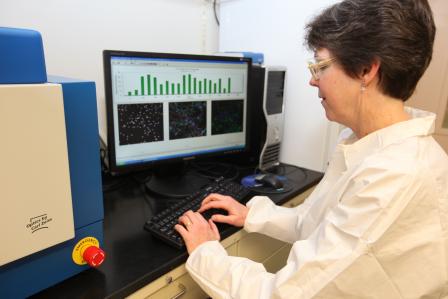Adverse Outcome Pathways

EPA researchers are working with collaborators to develop Adverse outcome pathways (AOPs). AOPs are conceptual frameworks that assemble existing knowledge about biological events that lead to adverse health effects in human populations and ecosystems. An AOP is like a series of dominoes, each representing an event at a different level of biological organization. If chemical exposure is severe enough to cause a biological change (domino falling), this can trigger a cascade of events that can result in an adverse health outcome in a whole organism or population.
On this page:
Tools and Resources
- AOP Knowledge Base - Publicly accessible and searchable web-based resource of AOP information.
- AOP Wiki - Interactive crowd-sourced tool for AOP development
- SeqAPASS - Sequence Alignment to Predict Across Species Susceptibility tool to aid in predicting chemical susceptibility to wildlife, including both plants and animals.
- Published Papers
- Adverse Outcome Pathways Fact Sheet
- Adverse Outcome Pathways Research Brief
Research Effort
The AOP research area organizes existing biological information to help researchers understand and predict the potential effects of chemicals. The AOP conceptual framework links stressor-induced changes at the molecular level, through effects at the cellular and tissue level, to human and ecological health outcomes. AOPs provide a scientifically-supported synthesis, integration, and summarization of existing knowledge and evidence that enables use of a broader scope of available information to evaluate chemicals with little data. AOP research focuses on developing AOPs for high-priority pathways and applying well-developed AOPs to case studies, addressing the widely varying needs of decision makers.

